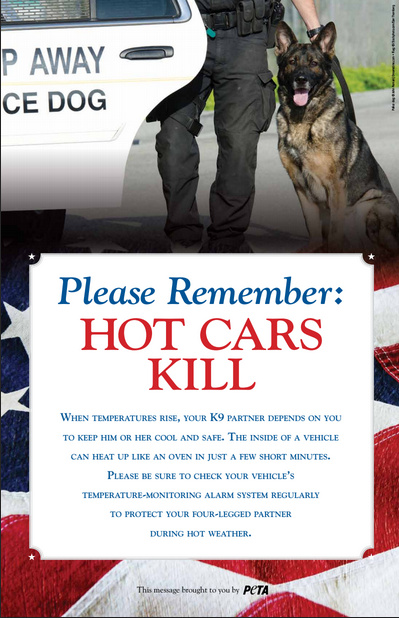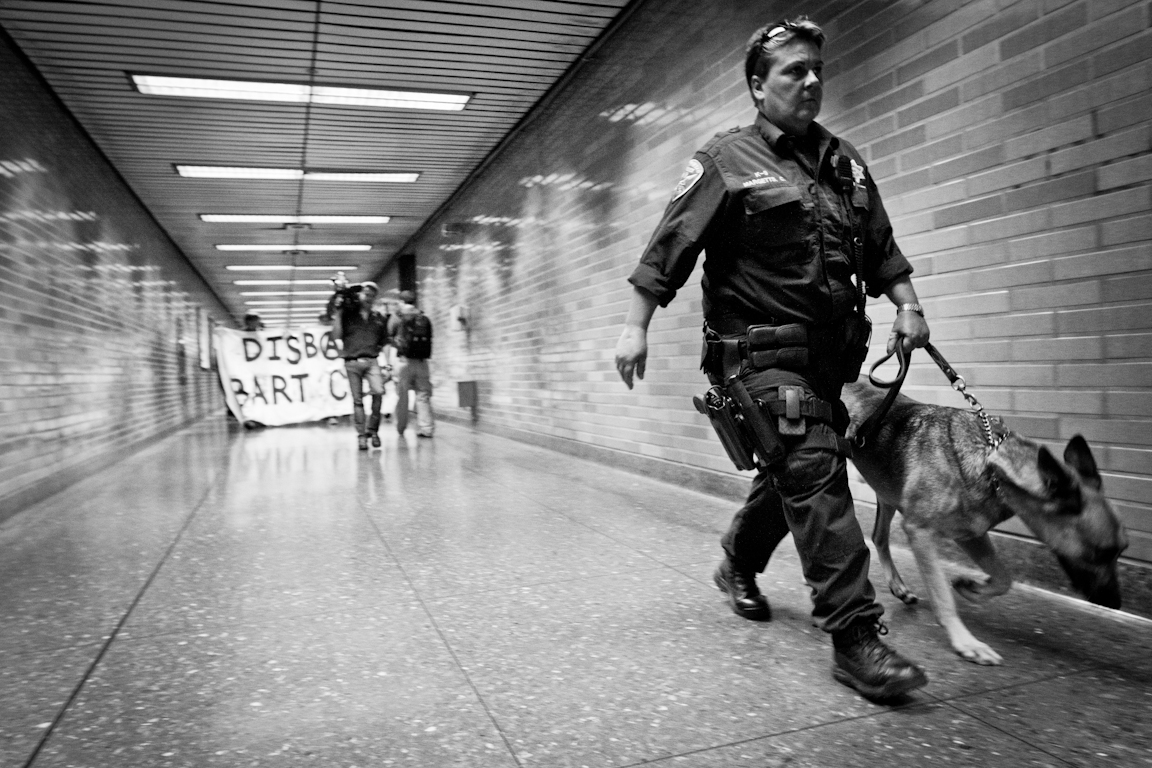Originally published at MintPress News.
AUSTIN, Texas — Despite years of awareness campaigns by animal rights activists, hundreds of dogs still die each year after being left in parked cars on hot summer days. Working dogs are not exempt, and heat exhaustion has claimed the lives of at least 12 police dogs so far this year.
A representative for People for the Ethical Treatment of Animals told MintPress News that temperatures in a car can climb faster than many people realize:
On a 78-degree day, the temperature inside a parked car can soar to between 100 and 120 degrees in just minutes, and on a 90-degree day, the interior temperature can reach as high as 160 degrees in less than 10 minutes.
PETA has used letters and posters to educate police K9 handlers about the risks of heat exhaustion in parked vehicles and to encourage law enforcement agencies to install heat alarms in all K9 vehicles. Many agencies use these devices, but the alarms sometimes fail.

The following list of deceased police dogs is based on information from PETA and the Officer Down Memorial Page:
- Baltimore — Kojack and Dingo died of heat exhaustion while assigned to the Maryland Department of Corrections. They were assisting officers closing a detention center, but the air conditioning failed in the vehicle they were being held in while their handler tended to other duties. It was 83 degrees outside on the day they died.
- Brown County, Wisconsin — Wix died when both the air conditioning and heat alarm in his handler’s patrol car failed while on assignment at the PGA Tour.
- Conyers, Georgia — Although Zane was left in a vehicle with a heat alarm, it was wired to shut off along with the ignition. He was inadvertently left in the vehicle for at least seven hours after his handler went home sick.
- Gulf Shores, Alabama — Mason was not assigned to normal K9 duties, but rather “community engagement,” which resulted in the dog being left in a vehicle that was not properly equipped for K9 use. Mason died after being left in the backseat of a patrol car while his handler transitioned between duties.
- Hialeah, Florida — Jimmy and Hector were accidentally left in their patrol vehicle for nine hours when their handler was called to join an emergency missing person’s search with a neighboring agency.
- Jim Wells County, Texas — After three years in service to the sheriff’s department, Jola died when she was accidentally left in a car in Texas’ scorching August heat. She was originally purchased through narcotics-related asset forfeiture.
- Little Rock, Arkansas — Unlike the other dogs on this list, Titus was not left in a patrol car in the events that led up to his death. After helping to apprehend a suspect, he began exhibiting symptoms of heat exhaustion and died soon after at an animal hospital.
- Muldrow, Oklahoma — Zeke died from heat exhaustion after the air conditioner failed in his K9 unit. His handler returned after just 90 minutes away to find the air conditioning unit sending out hot air and the dog already deceased.
- Savannah State University, Georgia — Baston, a five-year veteran of the police force, died after being accidentally left for over three hours in a police vehicle while outside temperatures reached 95 degrees.
- Stockton, California — Nitro died after the air conditioning and a heat alarm both failed in his K9 patrol unit not long after he helped to apprehend a suspect. Outside temperatures reached 106 degrees on the day of his death.
According to PETA, at least 20 police dogs died of heat exhaustion between the years of 2012 and 2014. PETA officials told MintPress that heat exhaustion is a painful and terrifying way for a dog to die, often leaving a disturbing scene behind for owners or handlers to find:
In Georgia [in 2012], K9 officer Sasha died from heat exhaustion after her handler left her in his SUV over the weekend. Sasha clawed through parts of the seats, bit through seatbelts, and tore off the rear-view mirror in her frantic attempt to escape the vehicle.
Daphna Nachminovitch, a senior vice president at PETA in charge of animal cruelty investigations, said these traumatic canine deaths also have an “undeniable impact” on their handlers and the agencies where they were employed.
